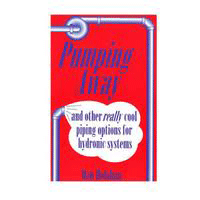Distributor software changes with the times
Convenience and ease of use are two buzz words distribution software manufacturers continue to hear from their customers.

Epicor’s Mark Jensen says distributors are looking to take things to the next level with digital information. “We are seeing a lot of focus and energy on managing attributed product data and rich content — SKU information to enable customers and salespeople to inform digital searches and purchases,” he says. Photo courtesy of Epicor.

DDI’s Barbara Jagoe says distributors that offer customers an online portal will stand out among the competition. “The future of e-commerce product development is focused on strengthening the value of service, making it easier for customers to adopt and complete transactions.” Photo courtesy of DDI System.


Convenience and ease of use are two buzz words distribution software manufacturers continue to hear from their customers.
“Distributors want their software to be easy to use, to automate processes and to improve both the user experience and the customer experience,” says Mark Jensen, Epicor’s director of product management-distribution. “It needs to be extensible to allow the distributor to accentuate its distinctive competencies and make them stand out from the Amazons and Graingers. And the technology and user integration need to be modern to cater to the millennial generation.”
Jensen says examples of that include the ability for customers to make payments to an online account or receive “imminent delivery” notifications. “Customers (distributors) want to text or email their customers when their delivery is 10-30 minutes out,” he says.
Continuing on the trends front, DDI System President Barbara Jagoe stresses distributors must be in-tune with the ever-changing marketplace where customers now have a multitude of ways to order goods and services.
“Marketplace buying choices continue to increase and customers are taking every opportunity to educate themselves on the options available to them,” she says. “More customers are taking advantage of easy, convenient methods for ordering such as branded mobile devices, online websites and customer portals. B2C interactions are impacting B2B relationships, encroaching on distributors in spaces they once easily commanded.”
Quite simply, Jagoe says distributors must realize it is more important than ever to keep customers coming back. “As a result, we are seeing such a large focus on customer intelligence, advanced product knowledge and anytime-anywhere access for teams,” she says. “To create this higher level of customer engagement, companies are seeking an integrated CRM and ERP system. One of the advantages to these ‘connected’ systems is they collect and present operational intelligence in easy, visually appealing snapshots that can be used to enhance every customer interaction. Having this level of detail creates connectivity opportunities that result in higher engagement and reduce the risk of price sensitivity and flight.”
Technology-wise, Jensen sees a variety of areas distributors now are focusing on including automation of repetitive tasks and functions. “Distributors in the past have focused on inventory management and pricing to be more profitable, but as the labor market has tightened and salaries/wages are increasing, it’s becoming more important to manage labor costs,” he says.
Accounts payable automation and the management of product content are two more prevailing trends in the marketplace. “EDI was the AP automation tool for years, but distributors are starting to look at tools such as document imaging to help with automating tasks,” Jensen says.
With online product content, customers, Jensen says, are expanding beyond the standard item, description and cost to more advanced information wants such as spec sheets and images. “We are seeing a lot of focus and energy on managing attributed product data and rich content — SKU information to enable customers and salespeople to inform digital searches and purchases,” he says.
Additionally, Jensen notes he’s seeing distribution customers using technology to help their customers win business. “As distributor customers are cutting labor/expenses, distributors are expanding their offering to assist their customers,” he says. “Over the last few years they are expanding into doing assembly/manufacturing work for customers and more distributors are getting into rentals, service and engineering.”
DDI’s Jagoe says another trend ramping up in the industry is the overall higher comfort level with advanced technology platforms. “Distributors are getting system savvy,” she says. “As a generation of technology users move into management levels, distributors are looking for greater efficiency out of their business software. They are quicker to adopt new workflows and are looking to reduce ‘clicks.’”
The future
Jagoe says e-commerce will continue to be a prevailing topic of discussion in the long-term. “E-commerce is here in a big way,” she says. “Distributors that never imagined it are realizing they can’t grow without it. And the ones that have it are looking for ways to continuously enhance it as a value-add to their customers. A distributor’s e-commerce presence needs to be mobile-responsive, customizable, content-rich and fully integrated with their ERP software.
Epicor’s Jensen says the next wave of ERP solutions must be “always-on, always-available mobile solutions, prepared for the Internet of Things and Industry 4.0.” He says data content and managing that content will continue to be “incredibly important.”
Jagoe adds distributors that offer their customers an online portal will stand out among the competition. “Plus, e-commerce not only is servicing the existing customer base, but also is exposing them to new opportunities. The future of e-commerce product development is focused on strengthening the value of service, making it easier for customers to adopt and complete transactions.”
Looking for a reprint of this article?
From high-res PDFs to custom plaques, order your copy today!









